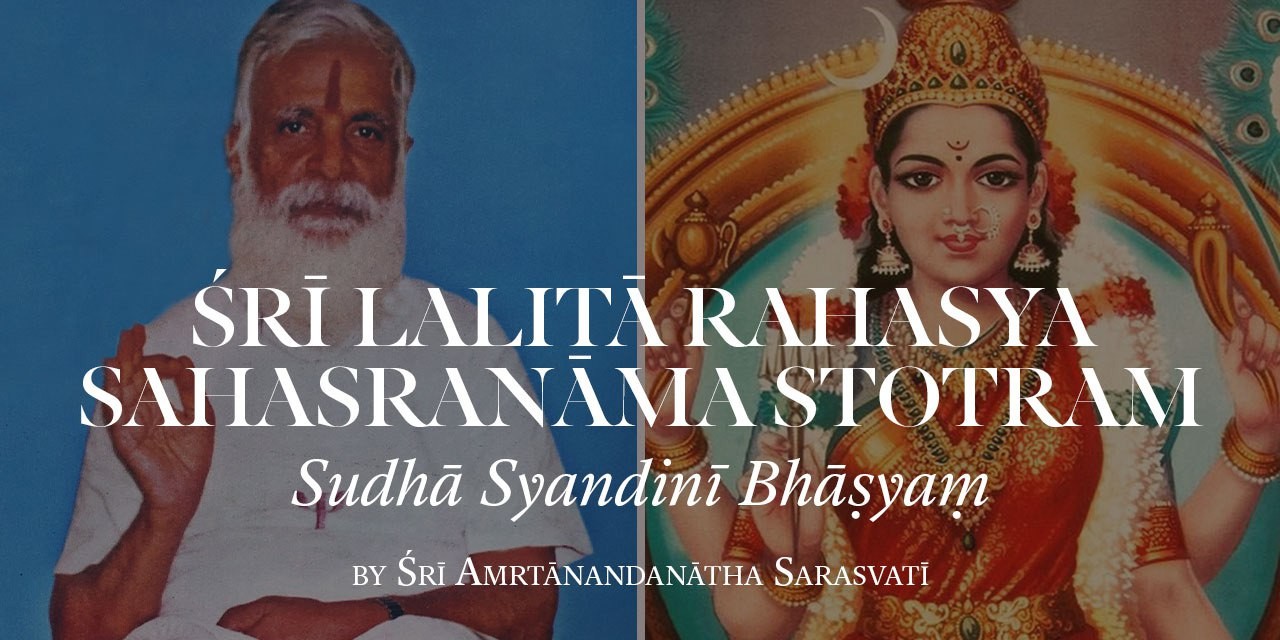- Edited

123. Śāradārādhyā
She is worshipped by Sarasvatī, sometimes called Śāradā.
There is a book in mantra śastra called Śāradātilakam. This described the worship of the deity and its various modes. All the important religious centers of Hinduism are called the Śāradā Pīṭhams. Adi Śaṅkarācārya established the various Śaṅkara Mutts all over India. She is worshipped four times a day, on all the days in all these Pīṭhams.
Devi is worshipped as Durgā during the nine day festival of Dasārā, and She is worshipped as Sarasvatī on Vijayadaśamī as conqueror of evil forces. Vijayadaśamī is also the same day formerly when the Kings, having finished their pūjā of Durgā, used to sort out vanquishing their armies. For the Kṣatriyas, i.e. the warrior class, Vijayadaśamī is a day of worship of weapons. This pūjā continues until today as pūjā of the machinery by the workers in the factories all over India, and of the books by children, etc. The ninth day of the Śāradā Navarātris, called the Mahānavamī, is the most important day of the year. That is the day when Devi chooses to visit the devotees as Mahākuṇḍalinī to remove ignorance from the devotee. Normally the total initiation from the Guru is usually given on the Mahānavamī. Since Devi is worshipped during the Śāradā Navarātris as Śāradā, She is called Śāradārājaḥ.
The word ārādhanā means worship according to the 16 upācaras or the 64 tantras. According to numerology it is interesting to note that the irreducible of 16 i.e. 1+6=7 and 64 i.e. 6+4=10 which reduces to one. The number 7 is sacred to the Indians because it represents the 7th lotus, the Sahasrāra. The number 1 is also important because in spite of all the apparent diversity, very confusing sometimes to people, God is only one.
Source: Śrī Amṛtānandanātha Sarasvatī "Sudhā Syandinī Bhāṣyaṃ" Typed Manuscript
(an incomplete commentary on Lalitā Sahasranāma)

